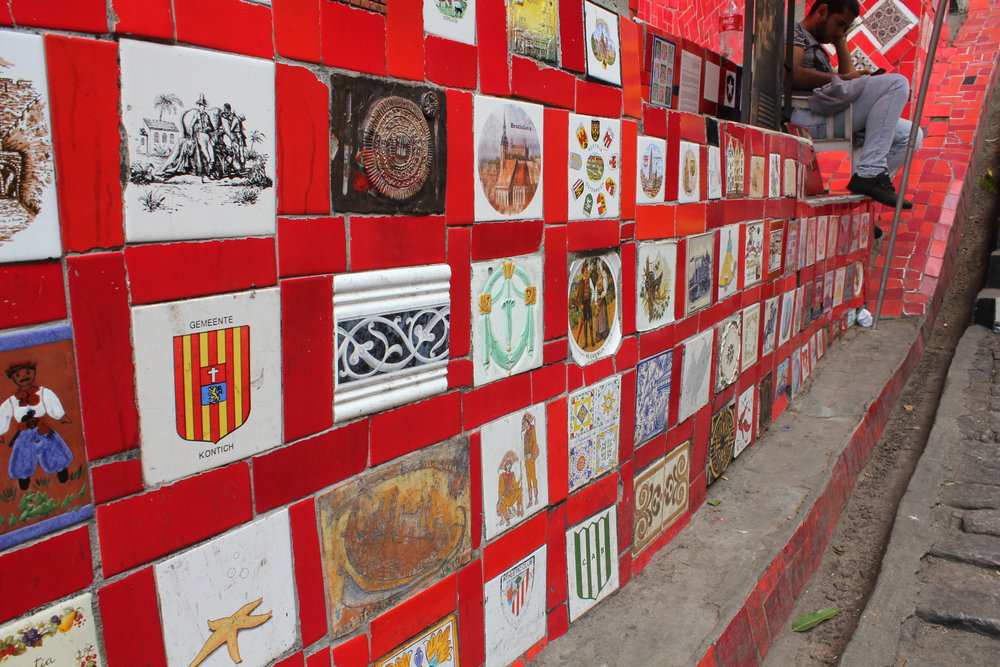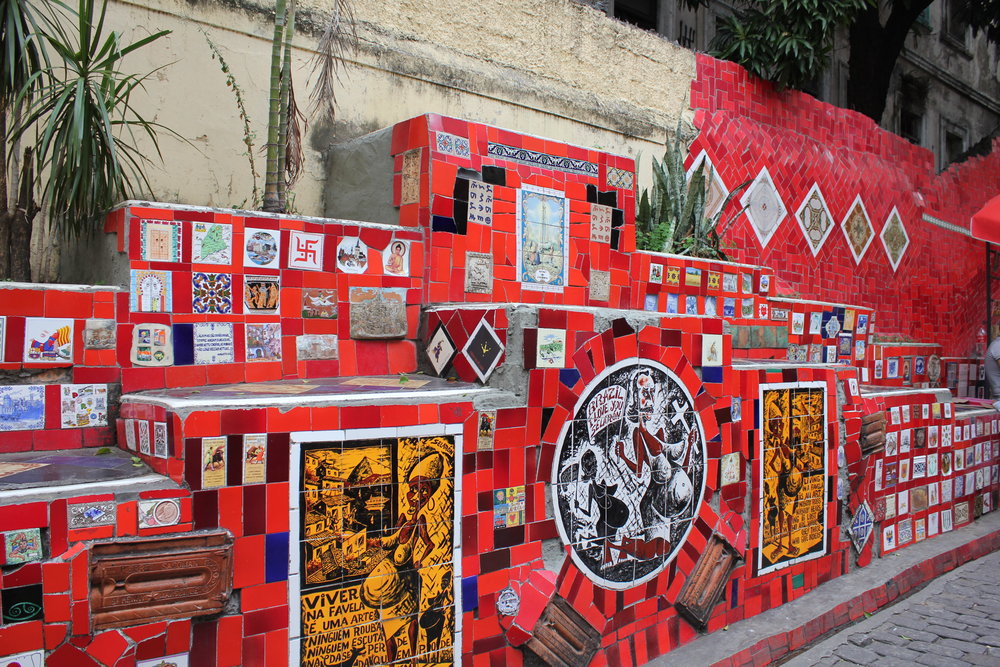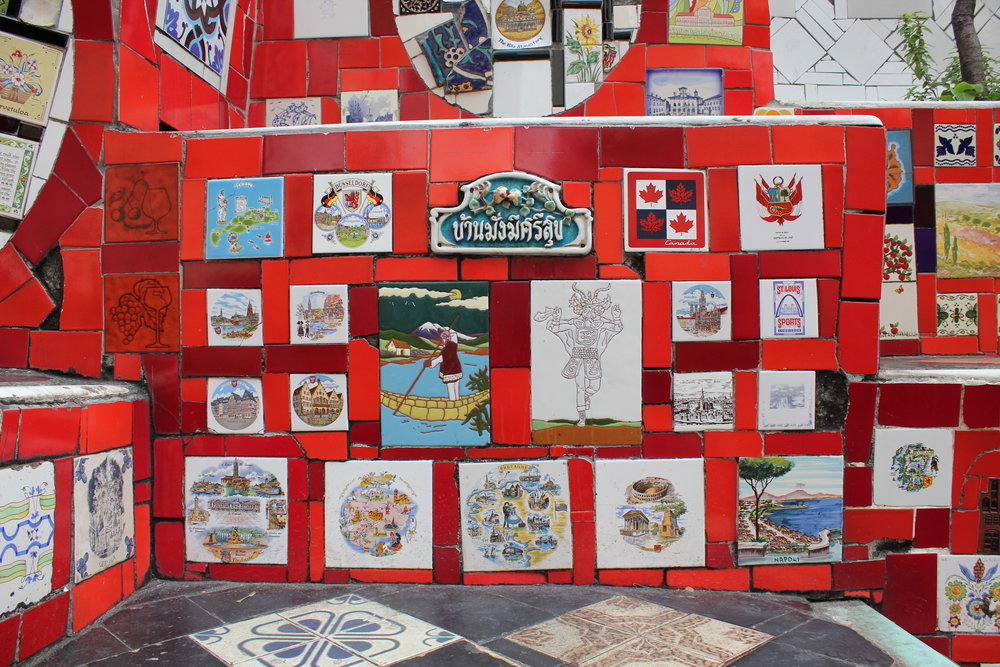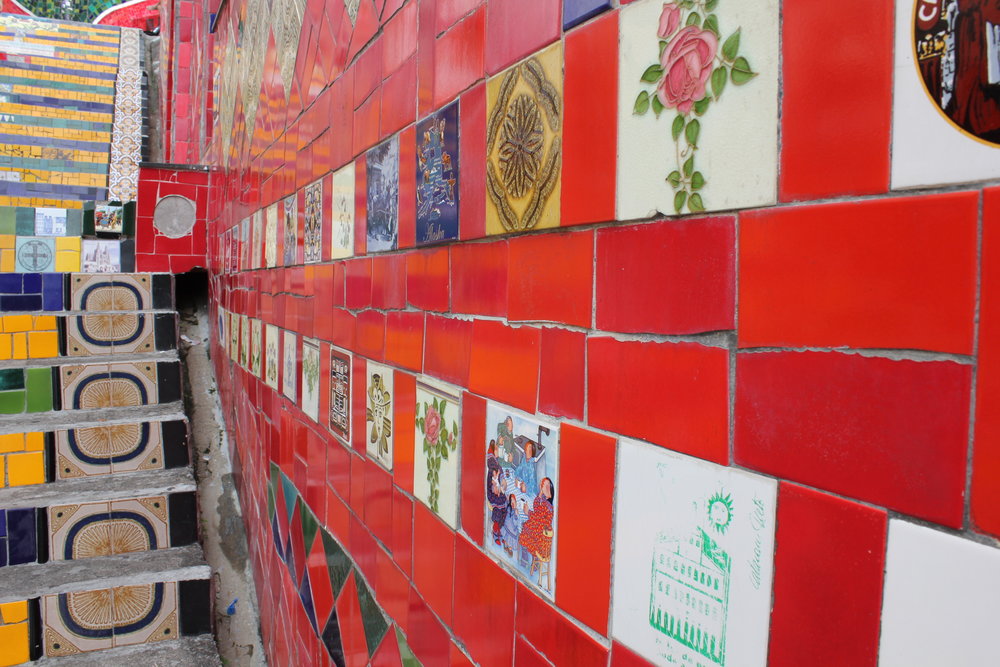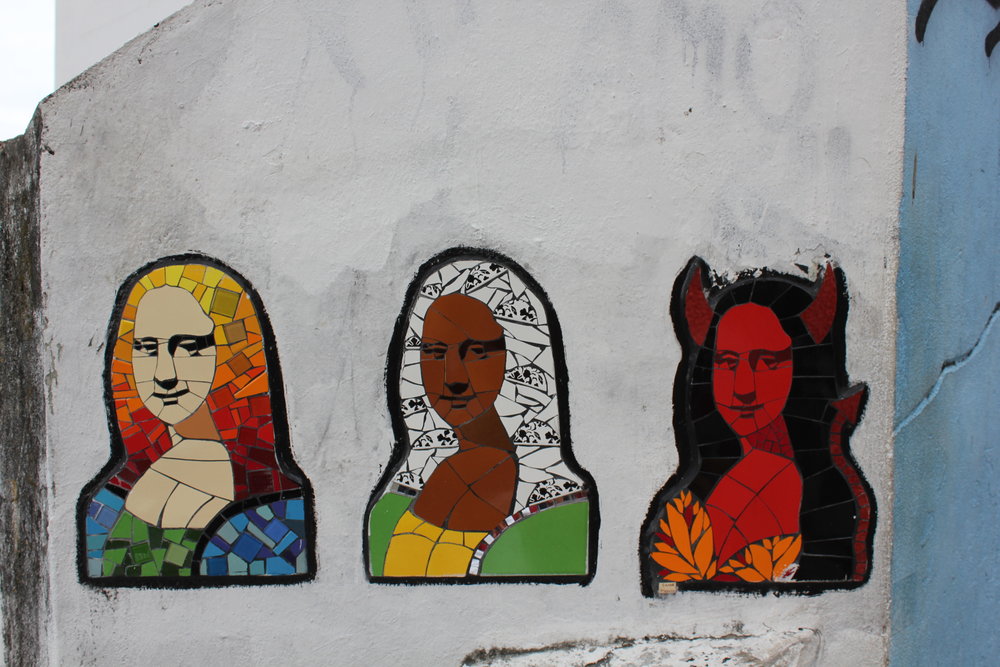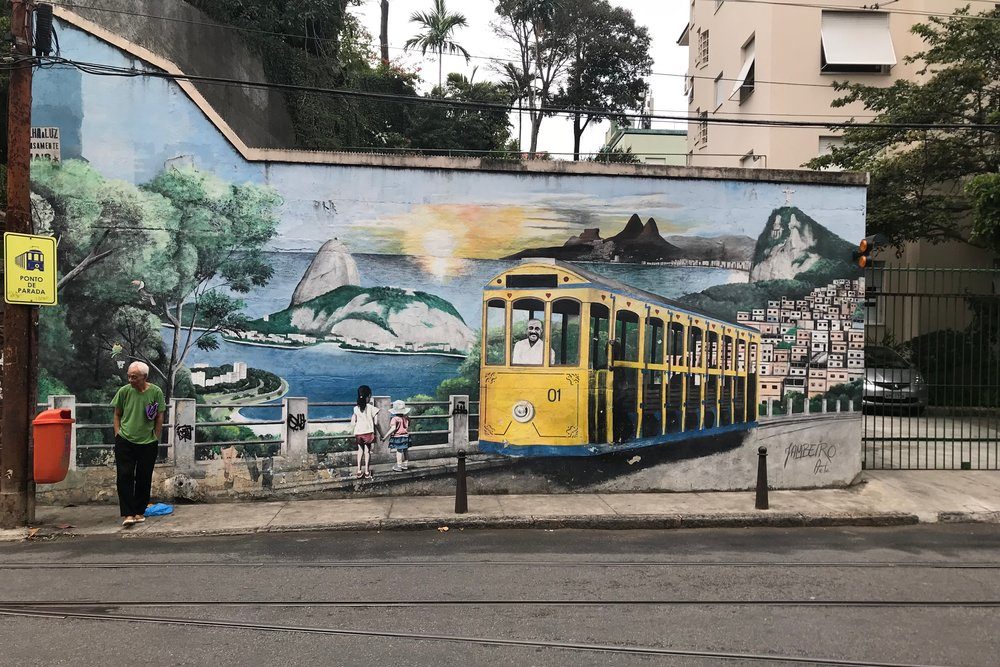Rio de Janeiro is one of my favourite cities in the world. I first visited back in 2014 during the World Cup; back then, I was captivated by the city’s world-renowned attractions, its stunning landscapes, and the endless passion of the Cariocas who live there.
Naturally, when I was planning to head back to Latin America, I made every effort to squeeze in a few days in Rio in order to rediscover some of the wonderful memories I had made four years ago.
This time around, I’ve made a video to capture the best parts of my time in the Marvellous City. You can watch it below:
If you enjoyed the video, feel free to give it a “Like”, leave a comment, share it in your circles, and subscribe to the channel!
Our sightseeing in Rio de Janeiro took on noticeably different undertones compared to our previous stops in Buenos Aires, Uruguay, and Iguazu Falls. Instead of a jam-packed itinerary with activities scheduled from daybreak to nightfall, we opted for a more relaxed approach to enjoying Rio, in line with the trademark Carioca lifestyle of keepin’ it casual.
Of course, we still made time to see the key attractions, explore a few neighbourhoods, and – as I aim to do on all my travels – catch a game at the football stadium, but the majority of our time was spent at the beach, where we basked in the lavish sunlight and got all of our daily exercise. Naturally then, that’s where we’ll begin…
Copacabana Beach
Copacabana needs no introduction. It’s one of the world’s most famous beachfronts, up there with Bondi, Miami, and Waikiki. Stretching four kilometres along the glimmering South Atlantic Ocean, it plays host to dozens upon dozens of restaurants, bars, and hotels, and acts a centre of public life here in Rio de Janeiro.
Beachgoers will soon learn to deal with the hawkers who peddle their product on the beach, offering beverages, trinkets, and everything in between. These guys are numerous but not relentless; a polite “não, obrigado” and they’ll leave you alone. One of the things that you may actually want to purchase, though, is a beach cloth; for some reason, visitors to Copacabana don’t tend to use towels, instead opting to lie on a colourful cloth – akin to a picnic mat – while they sunbathe.
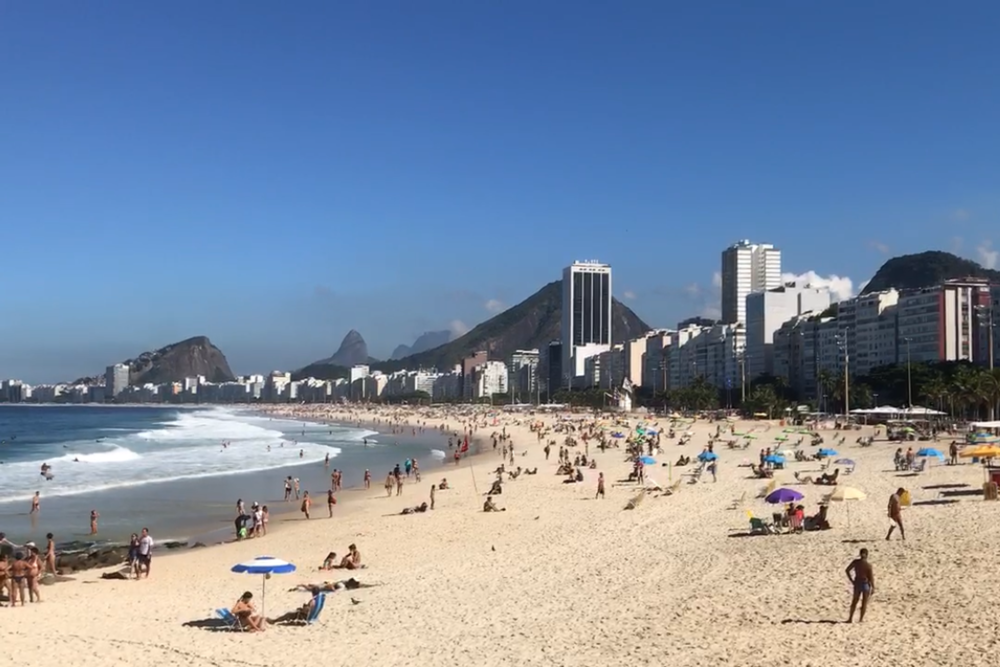
Rio de Janeiro, Brazil – Copacabana Beach
Avenida Atlântica is the main drag along the crescent-shaped Copacabana coast, separating the beach from the buildings facing it. Its sidewalk acts as an eminently walkable pedestrian promenade, which is an excellent way to explore Copacabana if you don’t feel inclined to trek through the scorching sand (it gets pretty hot here, even in the Southern winter).
The walk from one end of the beach to the other takes about an hour to complete, and is a great option for your daily exercise, as Jessica and I discovered. Public gym equipment is installed at regular intervals along the promenade as well, so you can do some pull-ups along the way as an added challenge.
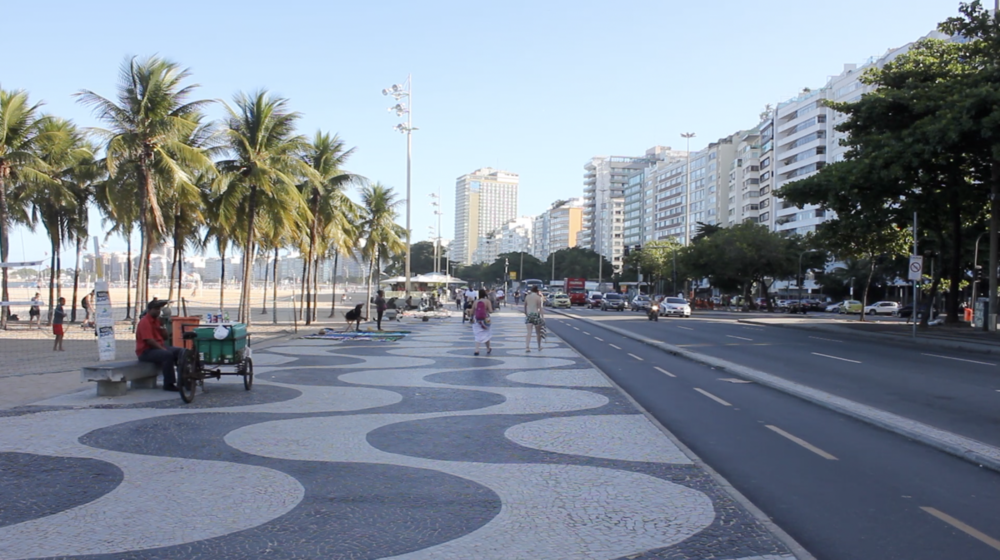
Rio de Janeiro, Brazil – Avenida Atlântica promenade
There’s also a handful of casual resto-bar establishments along the promenade, and while they aren’t exactly serving up gourmet fare, they’ll do a fine job if you’re looking for a caipirinha in a pinch.
Copacabana morphs into Leme Beach at its northern end, which is a smaller, quieter stretch of sand sitting in the shadow of the Sugarloaf. Meanwhile, its southern extreme is a cusp of land on which the historic Fort Copacabana is worth a visit; beyond the fort, the coastline continues as the more elegant but equally lively Ipanema Beach.
Cristo Redentor / Christ the Redeemer
Originally built in 1931, the 30m-tall Cristo Redentor statue has since become a globally recognizable icon of Rio de Janeiro and Brazil as a whole. For visitors to the city, it goes without saying that taking a trip up Corcovado Mountain to say hello to Jesus is an absolute must-do.
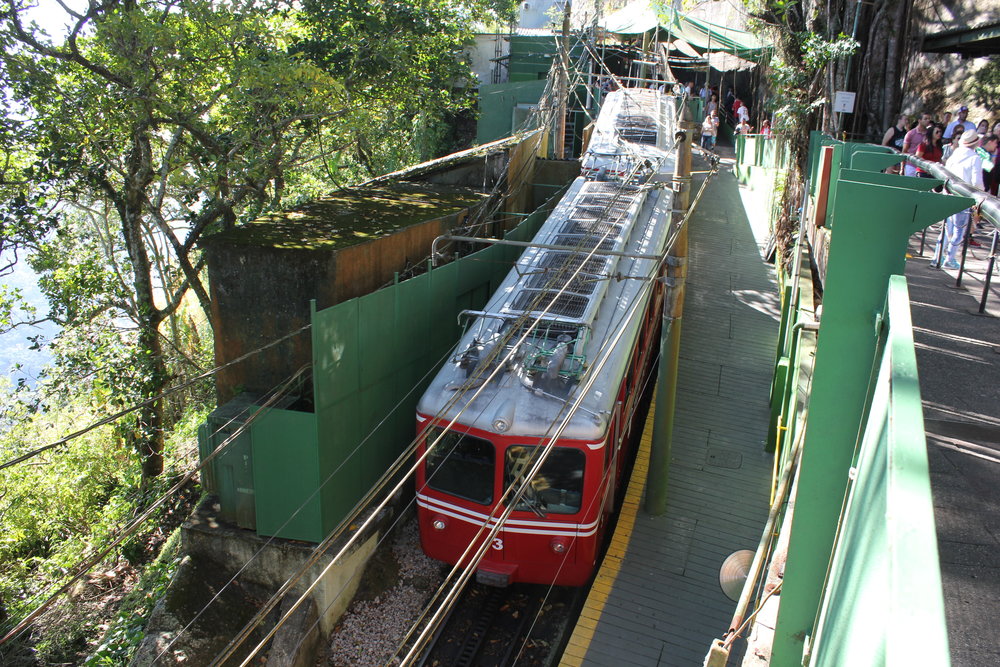
Rio de Janeiro, Brazil – Corcovado Train
It’s recommended to book your tickets for the Corcovado Train on the website so that you can just show up and get onboard. Take an Uber to the train terminus in Cosme Velho – most of Rio’s attractions are spread out across large distances, and given the imposing terrain on which the city is built, Uber will be your ideal option for getting around. From Cosme Velho, the train takes you straight up to the summit of Corcovado Mountain, where the breathtaking statue of Christ stands before your eyes.

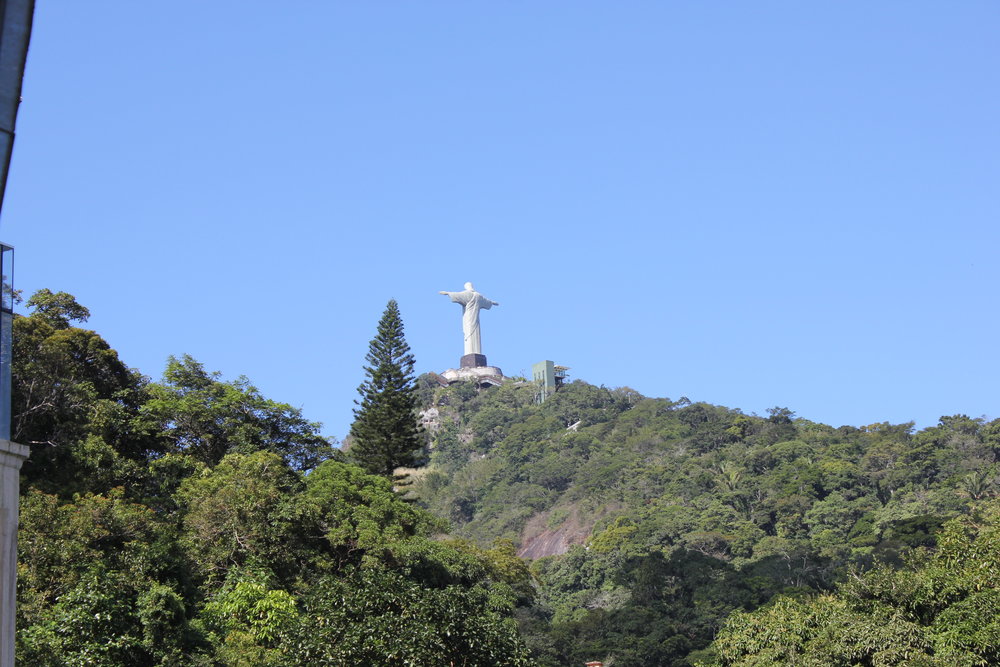

There’s so much to love about the statue, from its unwavering gaze, as if casting a permanent watchful eye over the city’s inhabitants, to its outstretched arms bringing absolution to those who repent.
https://www.instagram.com/p/Bjit-fYl6tl
Furthermore, the Corcovado peak provides one of the best views of the surrounding area, and there’s something to look at no matter which way you face. See if you can spot Sugarloaf and the Maracanã Stadium, to name a few.
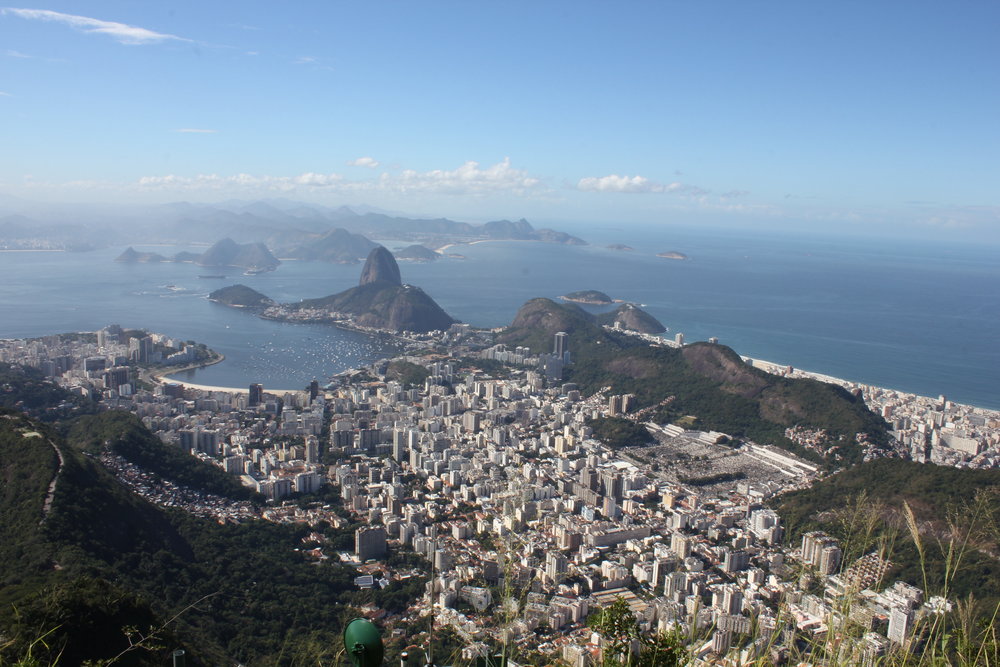
Rio de Janeiro, Brazil – View from Corcovado Mountain
Rio isn’t nicknamed the Marvellous City for nothing – not only is it blessed with incredible natural landscapes, but the way in which the sprawling metropolis was built in tandem with these landscapes is quite the sight to behold as well. Green spaces are incorporated into the urban geography, one of the best examples being the Tijuca Forest National Park in which Corcovado Mountain itself is located.
Outdoor enthusiasts will therefore relish the challenge of hiking up the mountain, and I imagine that the sight of the Cristo Redentor finally peeking through the trees would be hugely rewarding.
Pão de Açúcar / Sugarloaf Mountain
As stunning as the views are from atop Corcovado, don’t be fooled into thinking that you’ve seen the best that Rio de Janeiro has to offer. The panorama from Pão de Açúcar, or Sugarloaf Mountain, is one of the most mind-blowing views of any city that you can ever hope to see.
The ideal time to head up the mountain is just before sunset. To get up there, you can take the cableway, which transports passengers from ground level up to the top of Morro da Urca, a smaller hill adjacent to Sugarloaf; from there, another cableway spans the gap between the two mountain peaks. Each cable car fits 65 passengers, and if you’re lucky enough to grab a spot by the windows, you’ll be treated to a real spectacle as Rio drops away from you outside.
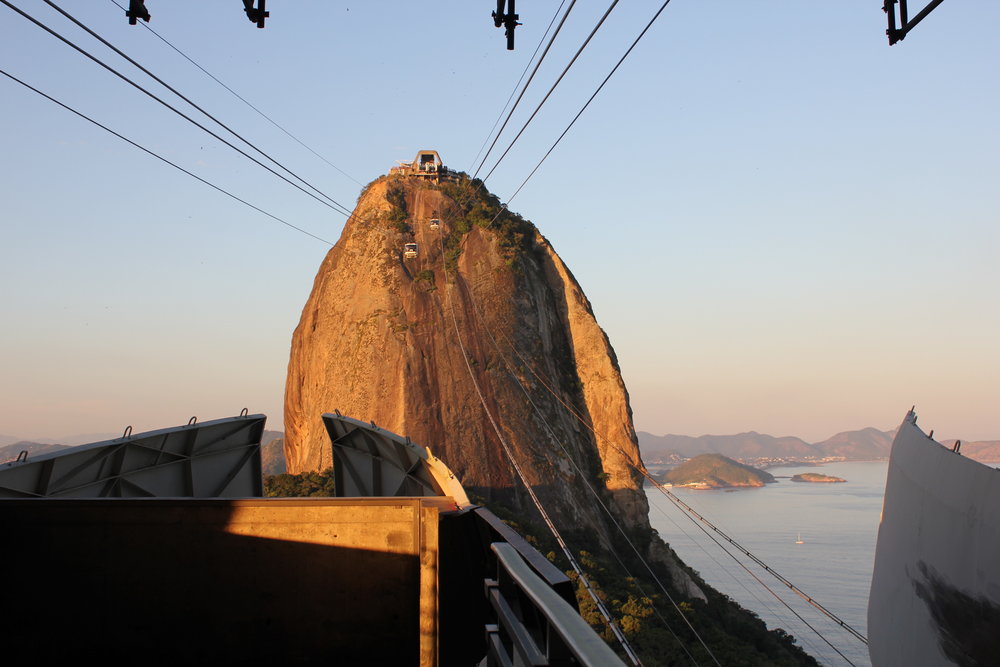
Rio de Janeiro, Brazil – Sugarloaf Mountain cable car
Alternatively, you can climb up Urca on foot – it’s not too difficult a hike, and takes about 20 minutes – and then catch the second cable car from there.
The experience of watching the sunset from the top of Sugarloaf is one of those phenomena that words and pictures can’t quite do justice. Witness Rio in action as another day draws to a close – the sun disappears behind the mountains, the beaches begin to clear, and the Cristo Redentor, cast in an almighty fluorescence, assumes its role as a beacon through the night for the mortal souls below.
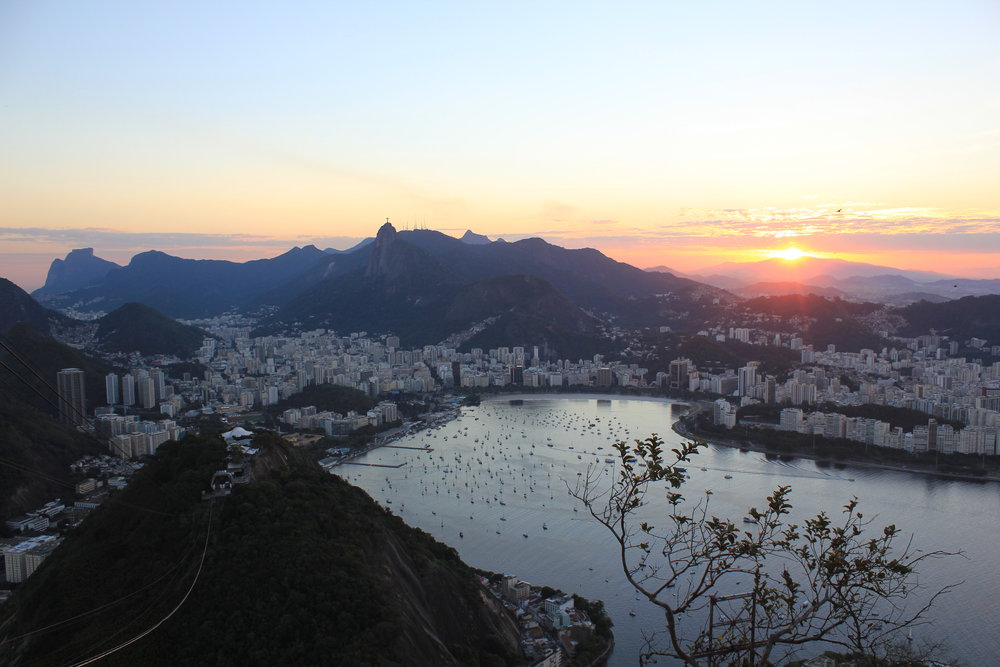
Rio de Janeiro, Brazil – Sunset view from Sugarloaf Mountain
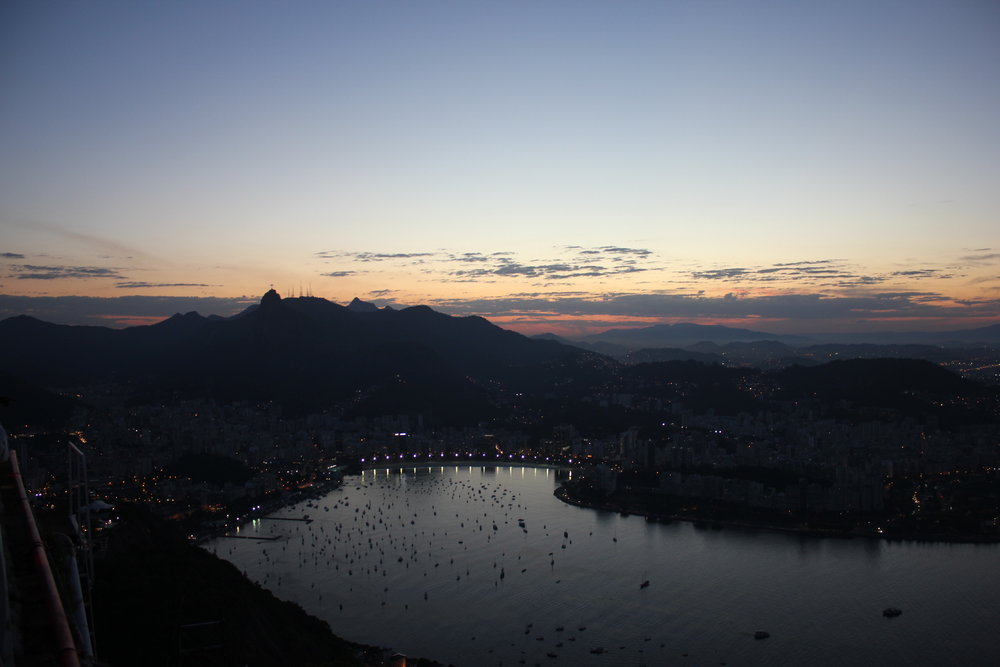
Rio de Janeiro, Brazil – Sunset view from Sugarloaf Mountain
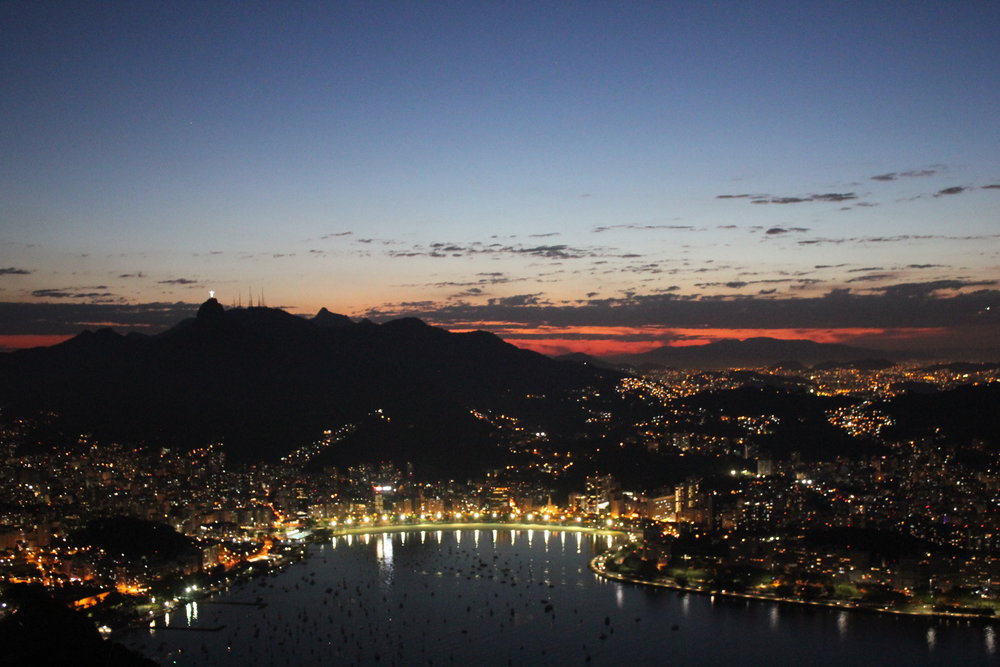
Rio de Janeiro, Brazil – Night view from Sugarloaf Mountain
Aviation enthusiasts will also love the view of airplanes descending into Santos Dumont Airport (SDU), Rio’s domestic airport that’s located on a piece of reclaimed land jutting into the bay.
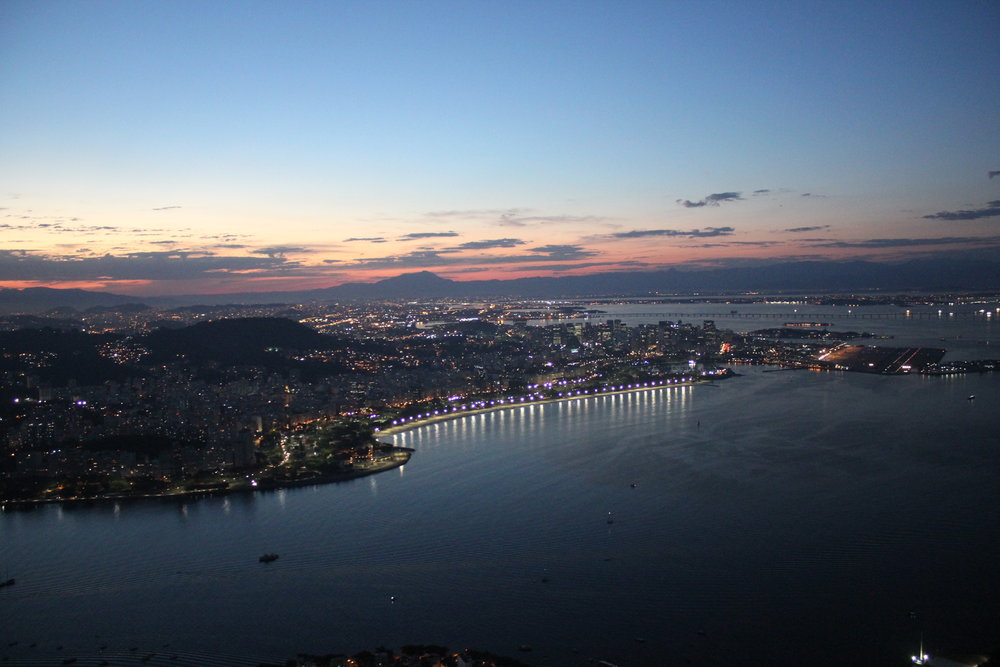
Rio de Janeiro, Brazil – Zona Centro and SDU airport
This is one of those places where there will always be a crowd of people along the outer railings of the viewing platform, and it will always be worth elbowing your way to the front. You can thank me later.
Lapa & Santa Teresa
Inland from the beaches and downhill from the mountaintops lies Zona Centro, some of Rio’s most artistic and culturally rich neighbourhoods.
Perhaps Rio’s most Instagrammable spot is the Escadaria Selarón, or the Selarón Steps, of the Lapa district. Chilean artist Jorge Selarón had lived all over the world before settling in Rio, and decided in 1990 to renovate the steps outside his home, which had fallen into disrepair. He would spend the rest of his life adorning the steps with a series of colourful ceramic tiles – originally scavenged from construction sites, later donated from all over the world – living in the same house along these steps all the way until his suspected suicide in 2013.
(By the way, shout-out to any longtime readers who remember when these steps were featured on the home page of this website!)
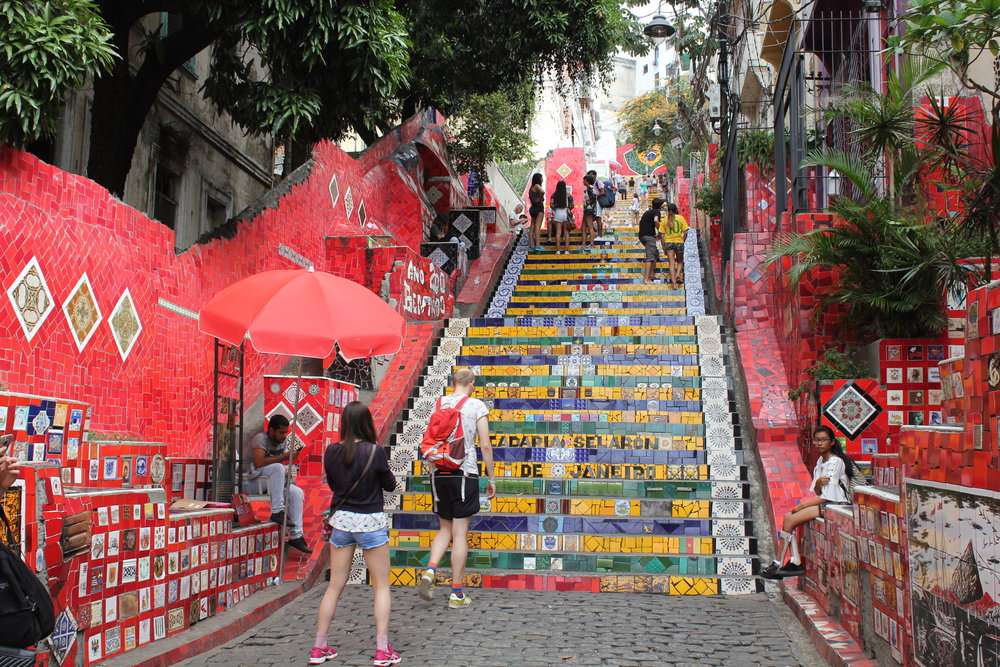
Rio de Janeiro, Brazil – Escadaria Selarón
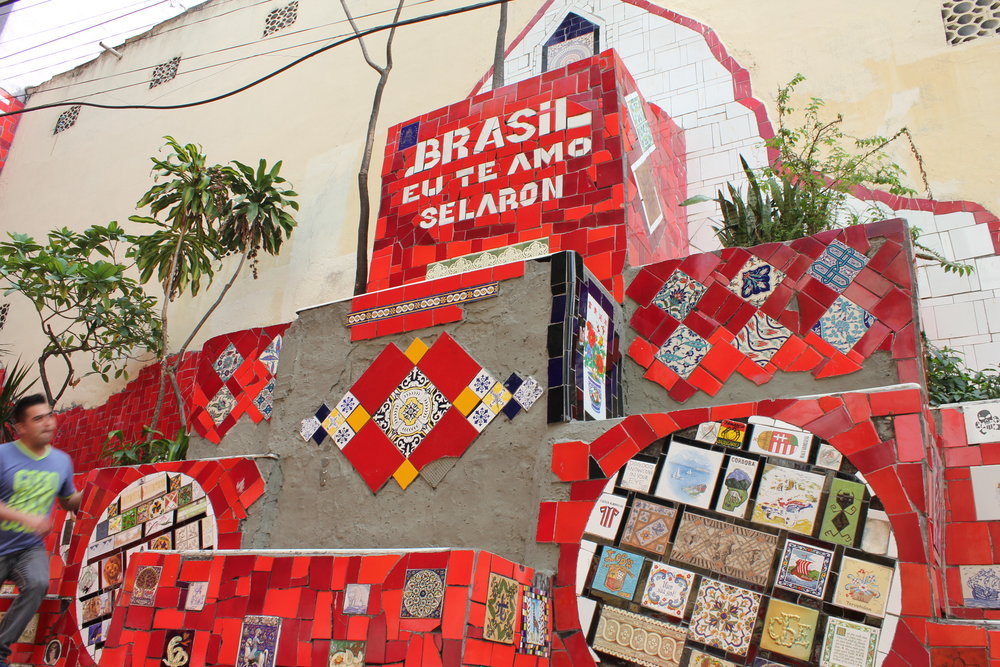
Rio de Janeiro, Brazil – Escadaria Selarón
Knowledge of the artist’s plight makes these steps especially interesting to walk. The cheerful exuberance of a new project, the thrill of worldwide fame, the final moment of desperation – you’ll find it all in the tiles.
I had stayed at a hostel on these steps in 2014 and had an amazing time. Back in those boisterous days, I also had the pleasure of indulging in Lapa’s excellent nightlife – I seem to recall La Esquina being a particularly lively venue!
Anyway, once you’ve climbed the full length of Selarón’s life work, you’ll have crossed into Santa Teresa, a hilly area with winding streets and a mean historic tram. As with most bohemian centres in cities around the world, Santa Teresa was once an upscale part of town, fell from grace, and is now undergoing a revival of sorts.
After wandering through the hilltop museums – I liked the Museu da Chácara do Céu and its beautifully manicured gardens – and stopping by one of the many family-owned restaurants for lunch, there’s no more graceful way to make your exit than the rickety Santa Teresa Tram.
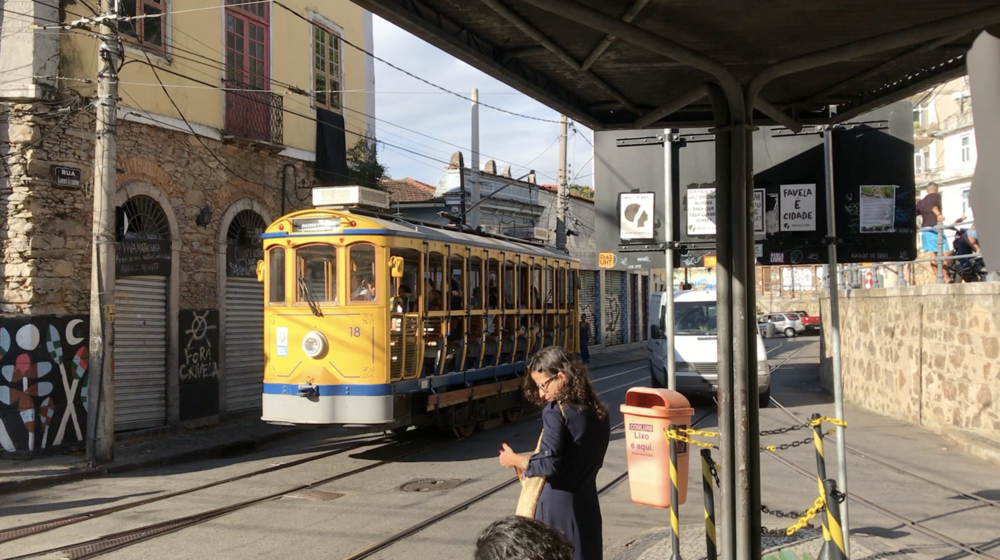
Rio de Janeiro, Brazil – Santa Teresa Tram
Dating back to 1872, the tramway provided easy access to the city centre for hillside residents, and today its distinctive yellow tram cars act as a popular tourist attraction and a symbol of the Santa Teresa neighbourhood.
Is Rio Safe?
Safety in Rio de Janeiro is a topic that I know many are concerned about. After all, a quick glance at any of the popular travel websites might give you the impression that Rio is overrun by criminals who rob tourists in broad daylight!
The truth is that while exercising a heightened degree of caution is certainly necessary, you’re quite unlikely to run into any trouble if you stick to the major tourist areas – the beaches, parks, Sugarloaf and Corcovado mountains, and the neighbourhoods of Zona Centro. Dress as casually as possible and don’t be flashy with your electronics.
Of course, the favelas (inner-city slums) are the most dangerous parts of Rio and represent the primary source of the region’s most pressing problems related to drugs and gang violence. Mostly consisting of makeshift housing built into the foothills, favelas are effectively self-governing entities and are home to hundreds of thousands of low-income Cariocas. While it’s true that being in a favela puts you at greater risk as a tourist, the odds of accidentally wandering into one are nevertheless quite low.
These days you can do guided tours of the favelas, which is a possibility I’d be interested in exploring on my next visit. The tour brings you through some parts of Rio’s largest favelas, showing you the unique cultural, geographical, and socio-economic mechanisms at work within an informal urban community like this. The tour operators have typically paid off the slumlords who control the area, in theory ensuring the safety of tourists, but of course, embarking on a tour like this is done so at your own risk.
Conclusion
For me, few things are quite as magical as looking up on a sultry night in Rio and seeing the Cristo Redentor illuminated high up in the mountains, impersonating the moon and watching over the city.
There’s definitely something infectious about this place, whether it’s the way the peaks and drops of its natural landscape dovetail so gracefully with its highways and buildings, or the sheer excitement on show when everyone is out and about on the Copacabana boardwalk. As I did many years ago, I loved every second of my time here, and look forward to returning sooner rather than later.


